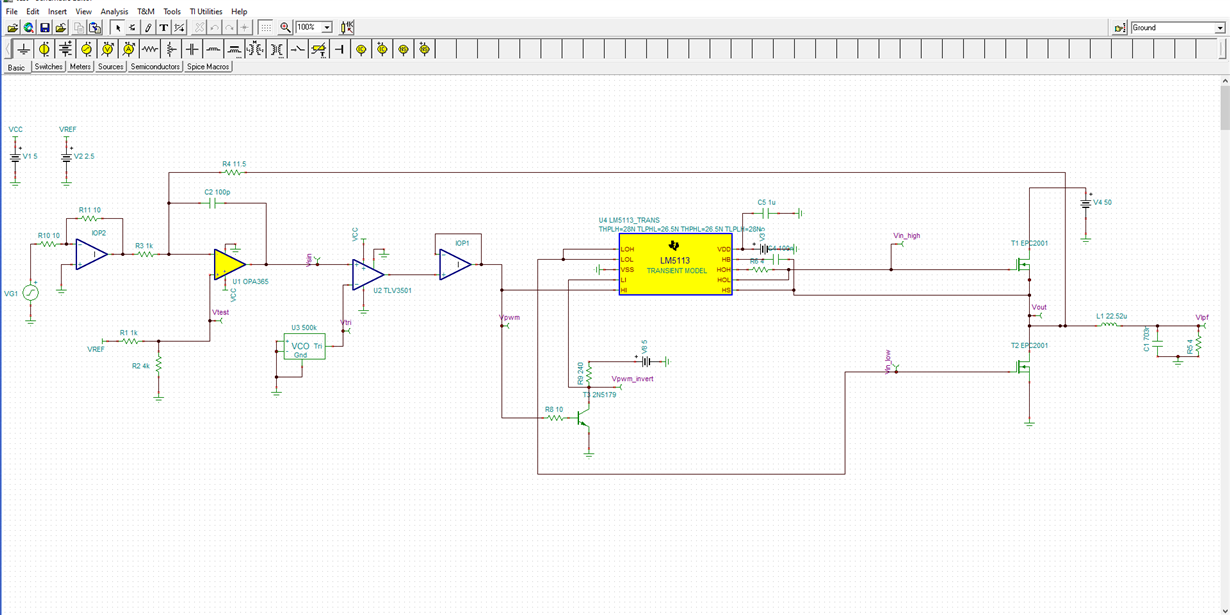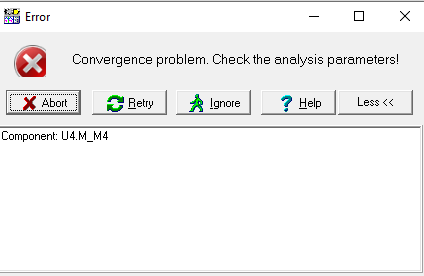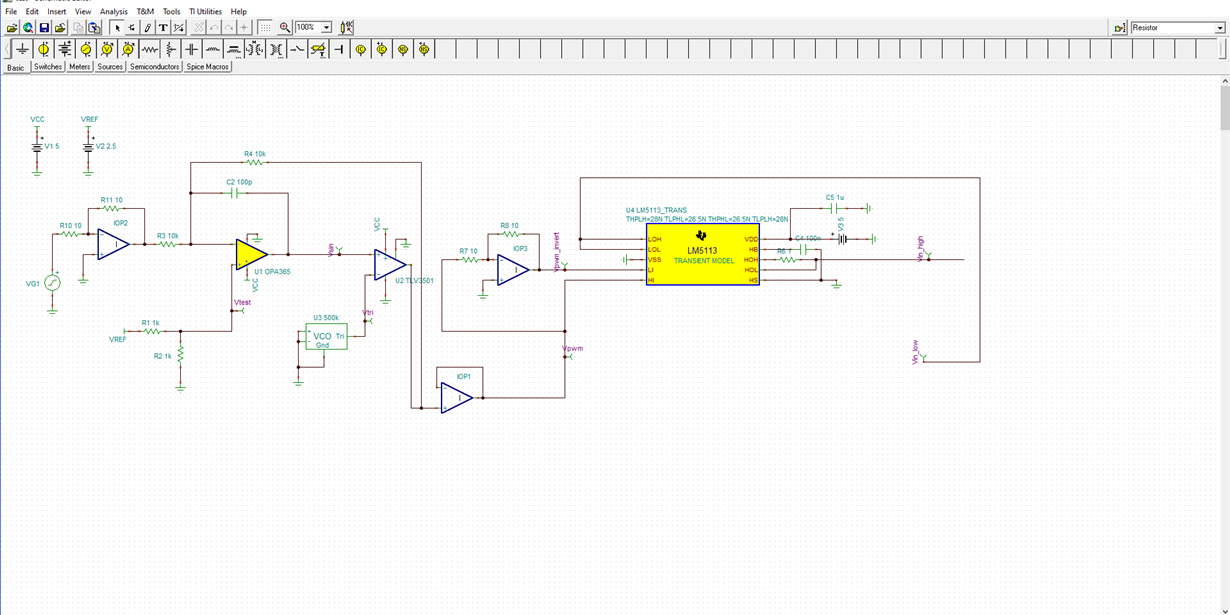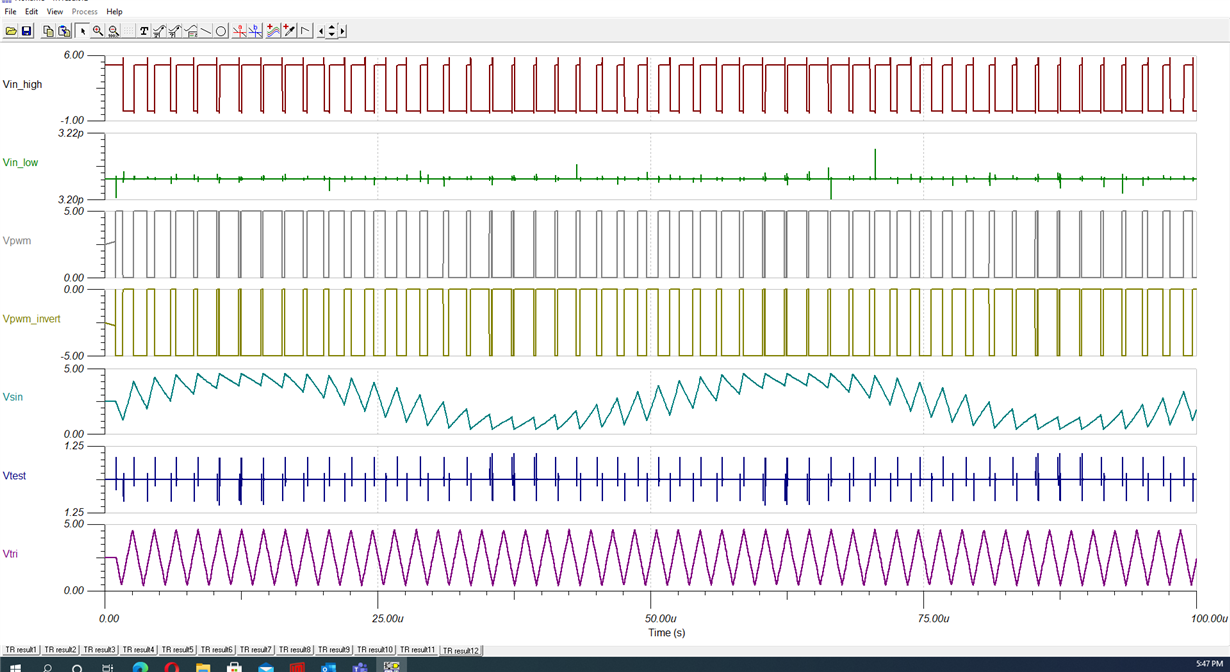Hi,
I want to use the LM5113 gate driver to improve the performance of my class d amplifier. My input is a sin wave with frequency 20K and amplitude 2V. I built the circuit based on LM 5113 datasheet. However, when I do my simulation, it always has a convergence problem. Could anyone please tell me how I am able to fix the problem? Thanks a lot. The circuit and the problem is on the attachment.
Best,





